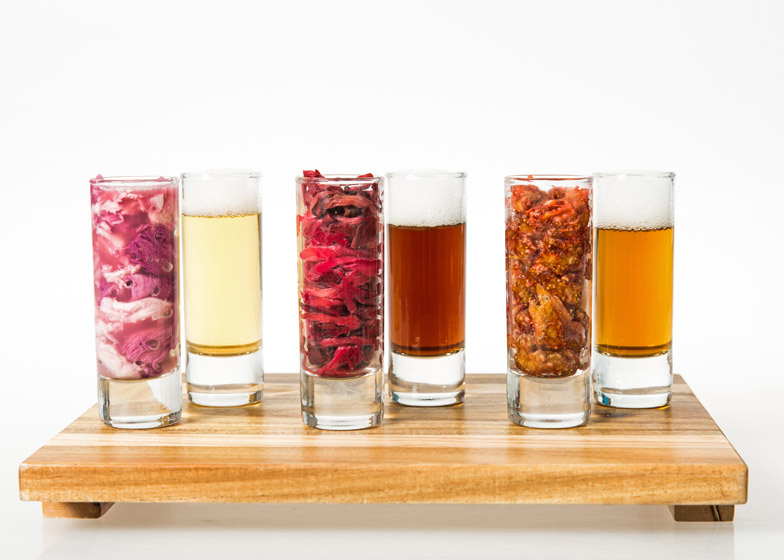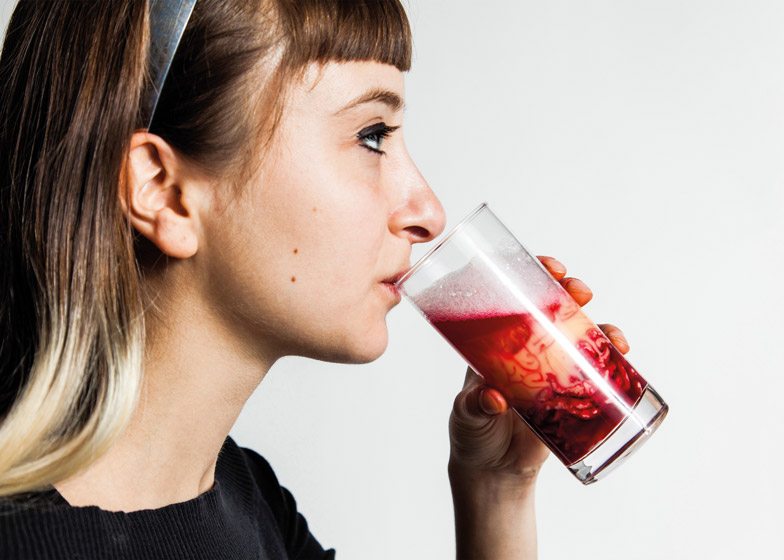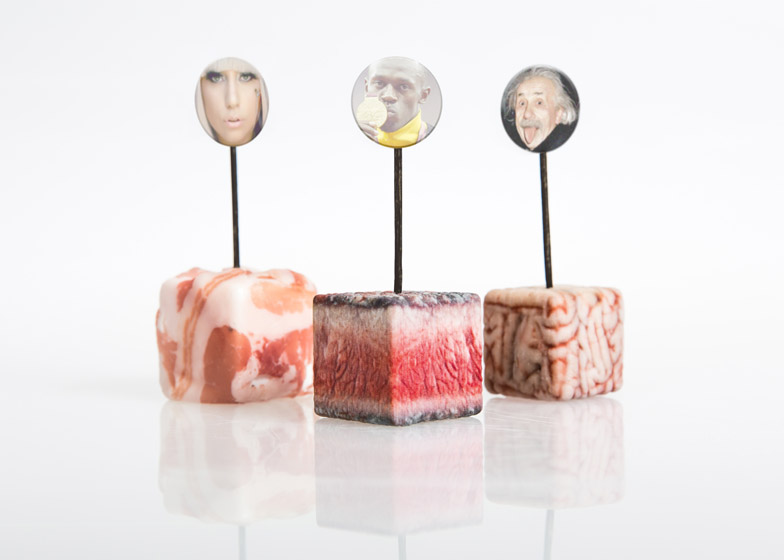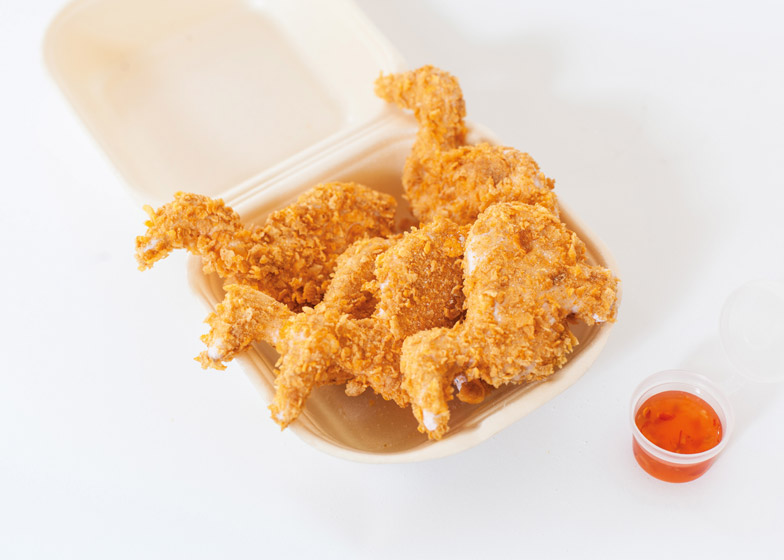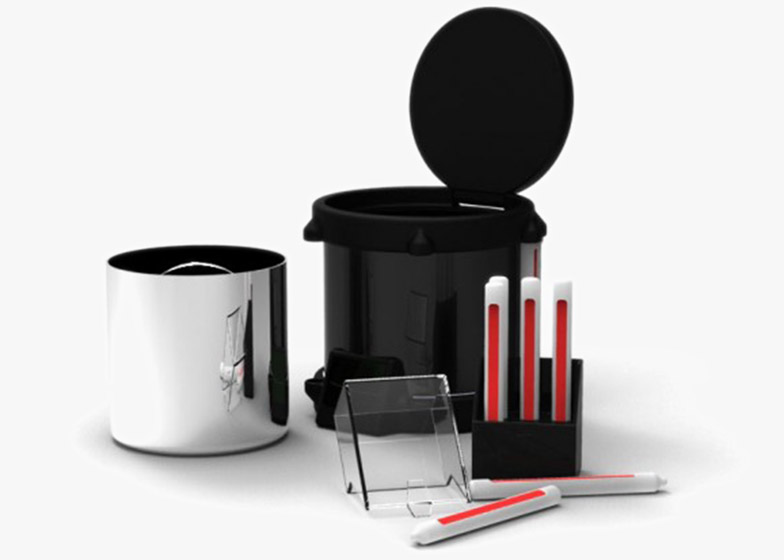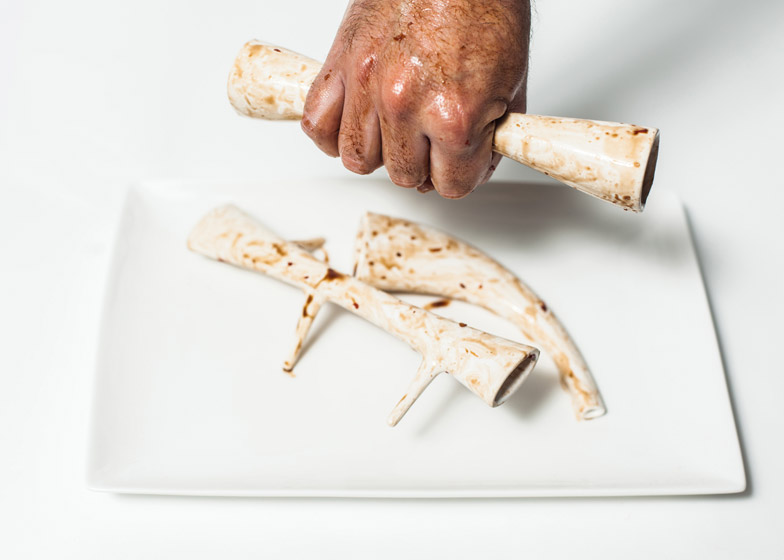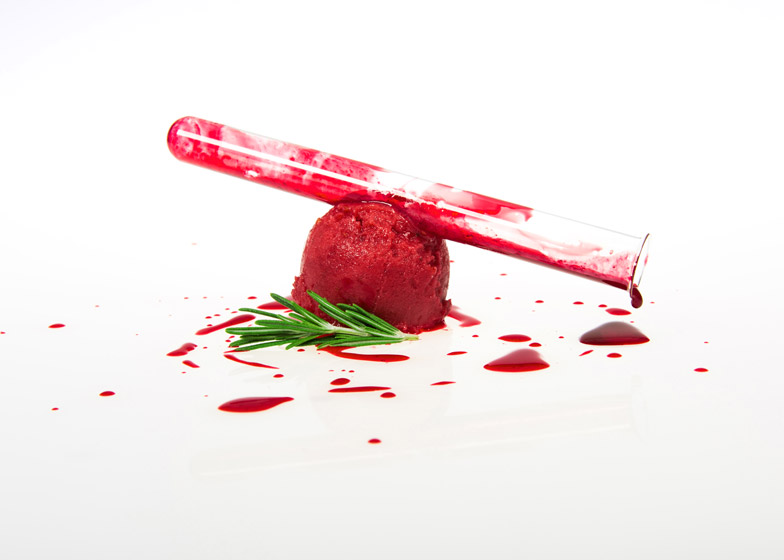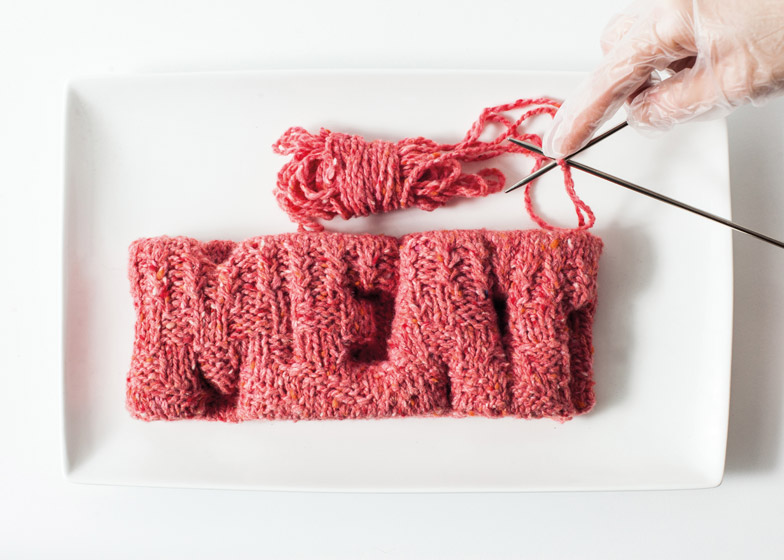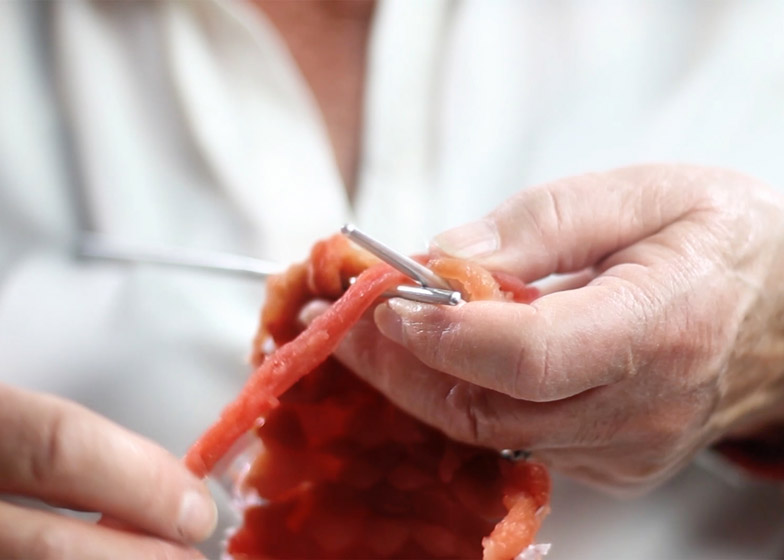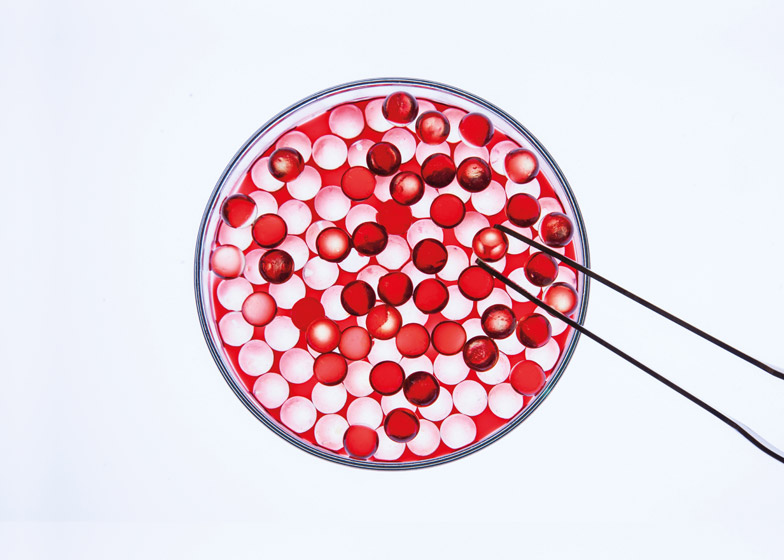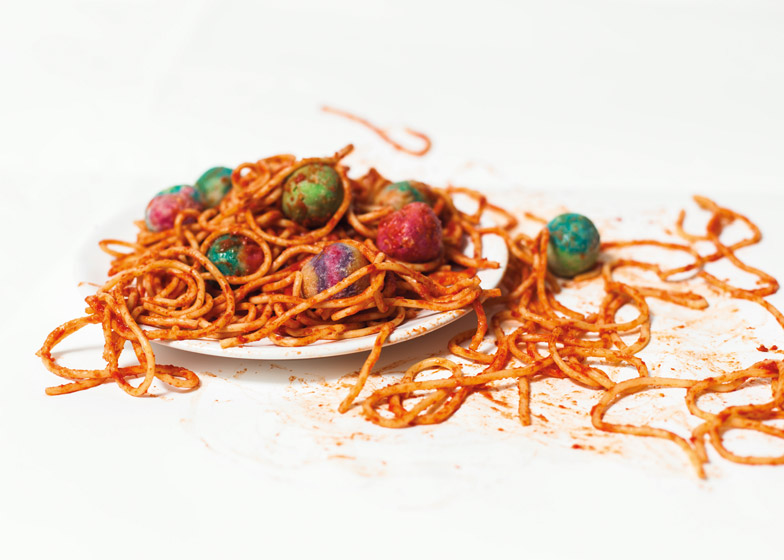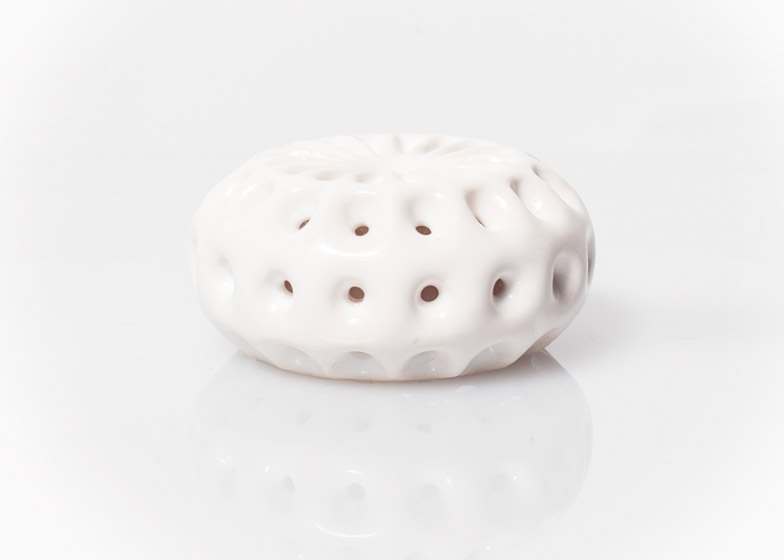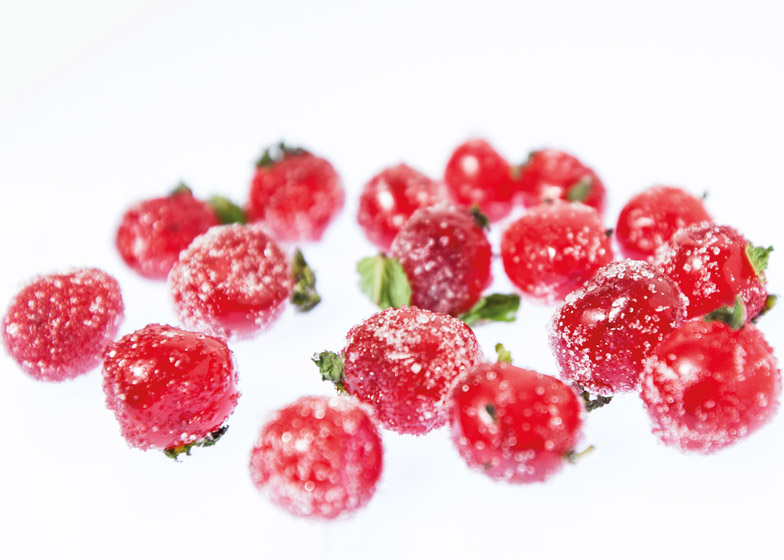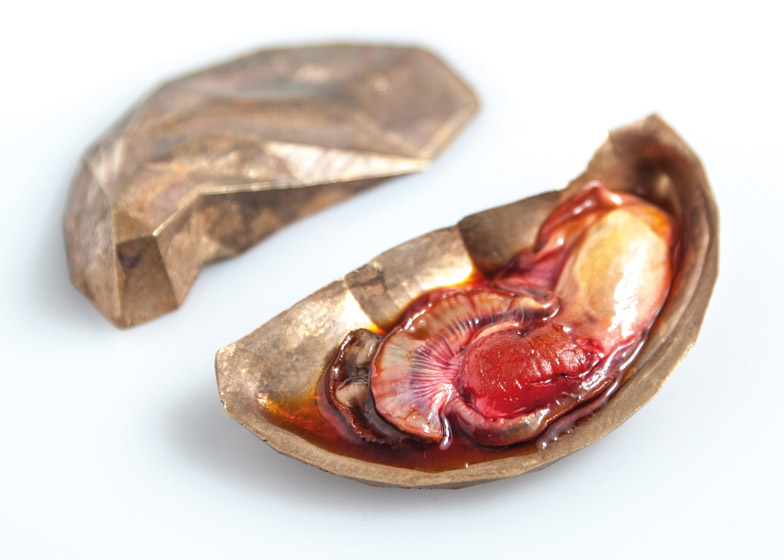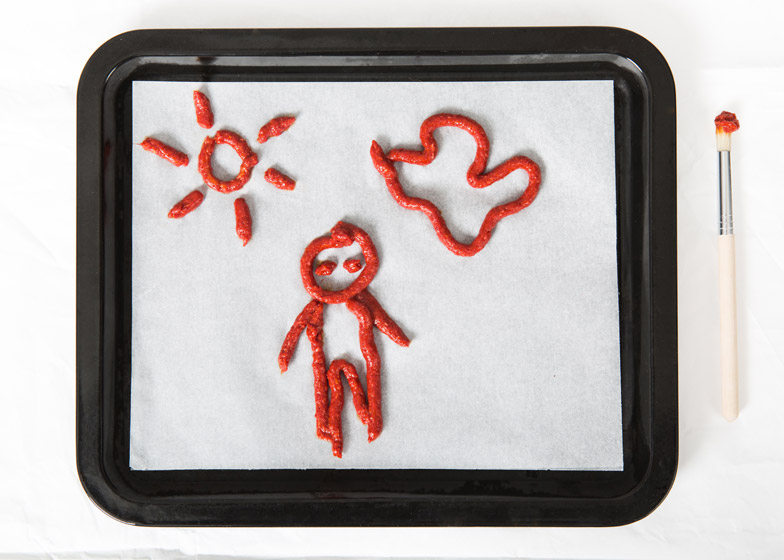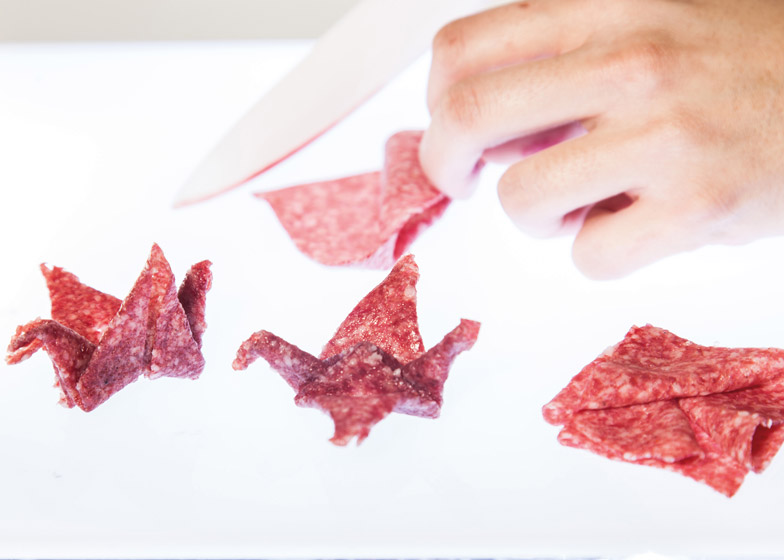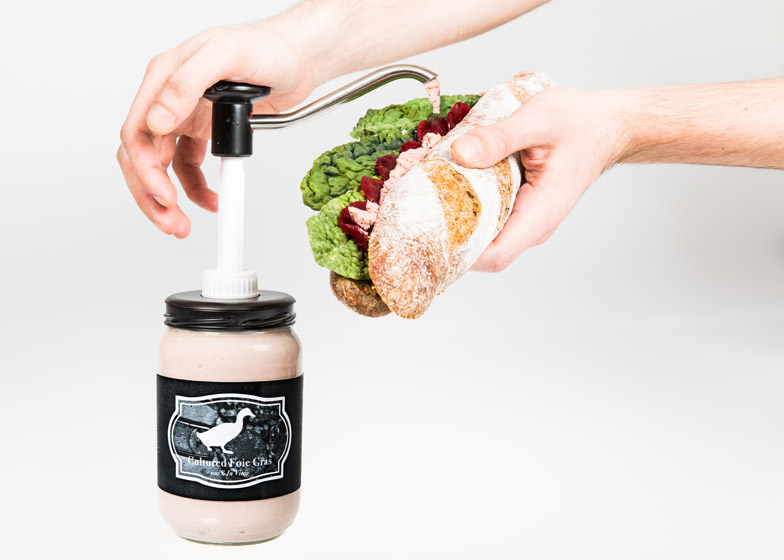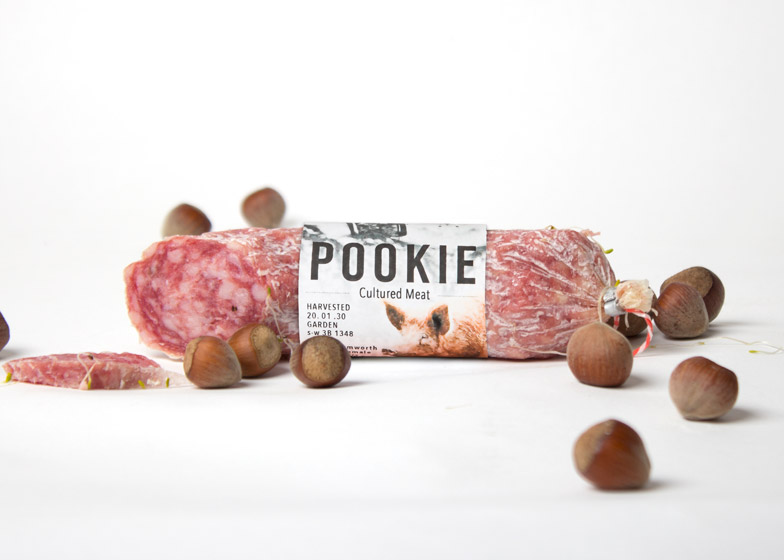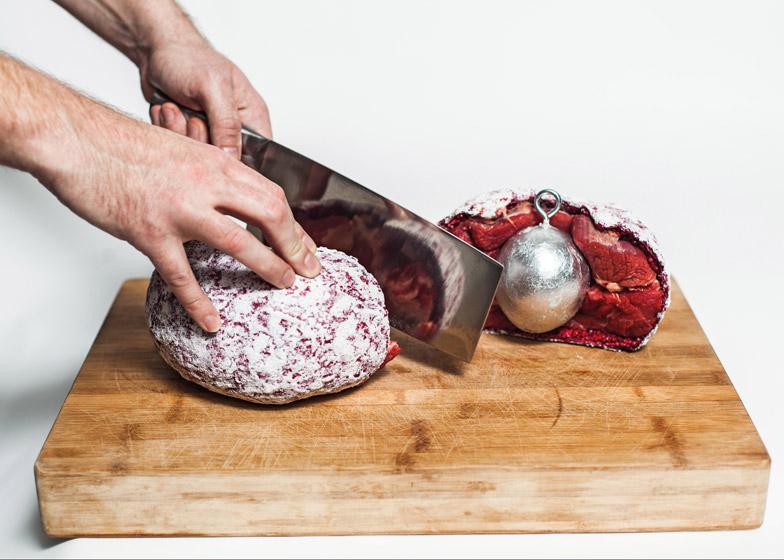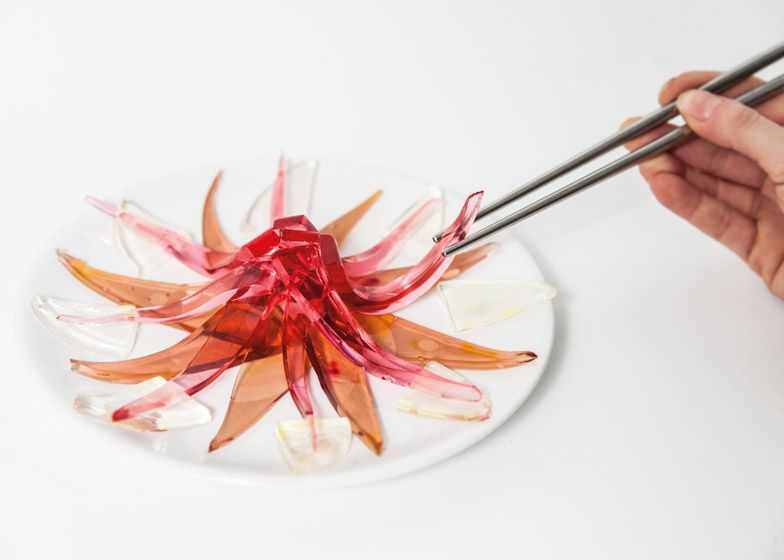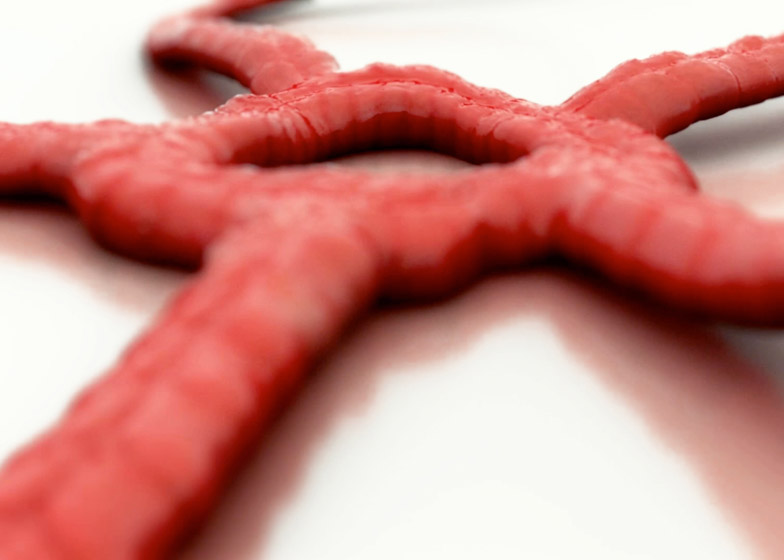Dutch artist and philosopher Koert Mensvoort has launched a virtual restaurant featuring a menu of conceptual dishes that could be made possible by lab-grown meat – including knitted mince, a cocktail made from meat foam and sausages grown from living pets (+ slideshow).
Launched last week, the Bistro in Vitro website offers virtual diners "food for thought" by allowing them to create their own three-course meal from a range of dishes that could one day be created using "in vitro" meat.
The aim of the project is to encourage a wider audience to engage with possibilities created by growing meat from cells in a controlled environment using tissue-engineering technologies.
As virtual diners select their meals on the site, their choices and feedback, combined with interviews with chefs, will also contribute to a documentary about attitudes to artificially-grown meat.
Koert Mensvoort worked with a range of chefs, designers and students to develop concepts for the dishes, which were recreated as life-like models either using real meat, 3D printing or more traditional modelling materials like clay, before being filmed and photographed for the site.
Options on the menu include Celebrity Cubes – cubes of meat grown using cell samples from famous personalities – animal-friendly foie gras and a writhing tentacled meat product called the Throat Tickler, which is described as occupying "the grey area between a sea anemone and a sex toy".
"My personal favourite is called A Pig From The Backyard and the idea is that you have a little pig in the backyard or on the farm, and you take some cells from it and you grow a local sausage from it," Mensvoort told Dezeen. "You can feed the sausage to your child and then the next day you can go out and the pig is still there, alive and well, and you can cuddle it."
"It's not too spectacular but it will change our consumptive relationship with animals," he explained. "Right now we know so little about the animals that are involved in our meat production, and it would be great to eat meat from an animal that is still alive and well."
Among the other concepts created for the project are see-through slices of "sushi" and meat pearls – soft spheres of a meat-like product that would offer an entirely new combination of flavour and texture.
"It doesn't relate to an animal at all, but it would taste better than the best sushi you've ever had," said Mensvoort. "I think that's interesting, that you can actually provide the new technology with its own authenticity in a way."
Scientists have been working on developing processes for growing meat as an answer to feeding a rapidly growing population and unsustainable farming techniques. In August 2013, a lab-grown burger created by a team of Dutch scientists was cooked and eaten in a public demonstration.
"I noticed that most of the scientists who are working on it, and some of them I know very well, they typically want to make the same hamburgers, sausages and steaks that we already know and they try to copy that with this new technology," said Mensvoort.
"My question was, OK, so you have a new technology and you think we're going to just grow the same products? That's not going to happen."
Mensvoort previously worked in a research capacity at Eindhoven University and consulted with scientists to work out how realistic it might be to actually make the dishes on his menu.
All of the meals in Bistro in Vitro are ranked using a star system, with five stars representing products that are possible to create using the artificial meat technology today, down to one star, which indicates ideas that are unlikely to be achieved within the next couple of decades.
"Mark Post, the Dutchman who made the hamburger, he is trying to get the price down to about €60 per kilo in the next five to six years and then it's still expensive meat but it could find its place on the market," said Mensvoort. "Right now it's still in the research phase but there are people working on it to make it more affordable."
Bistro in Vitro was produced in collaboration with Dutch digital movie company Submarine Channel and the Next Nature Network, an open source website that focuses on "nature caused by people", for which Mensvoort is creative director. It follows on from a cookbook Mensvoort produced a year ago on the same theme.
Mensvoort hopes the project will encourage a wider dialogue about the future of our food system.
"It is a restaurant where we strictly serve food for thought, because the dishes are too expensive to make," he told Dezeen.
"But still I think it's valuable because more people need to be involved in this discussion on what we will eat in the future. So that's also the goal, to make potential in vitro meat futures very tangible and show it to people and then ask them which ones they actually want."

